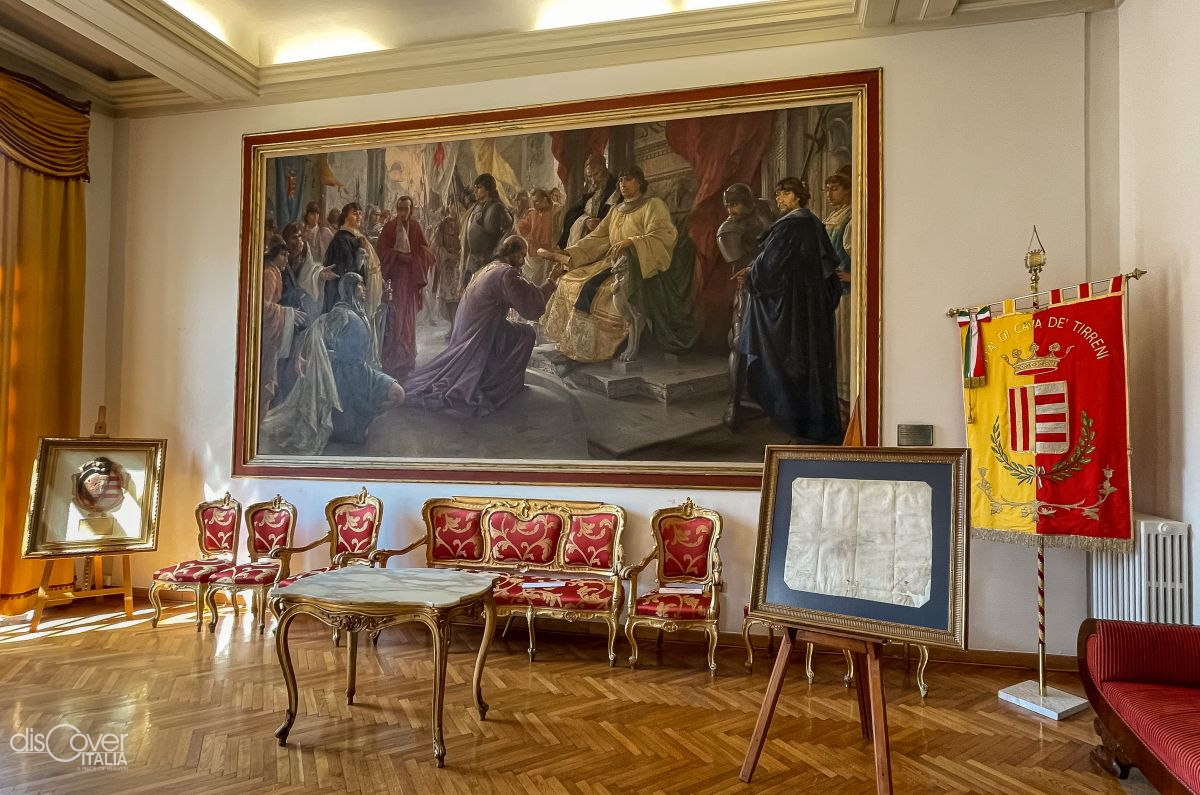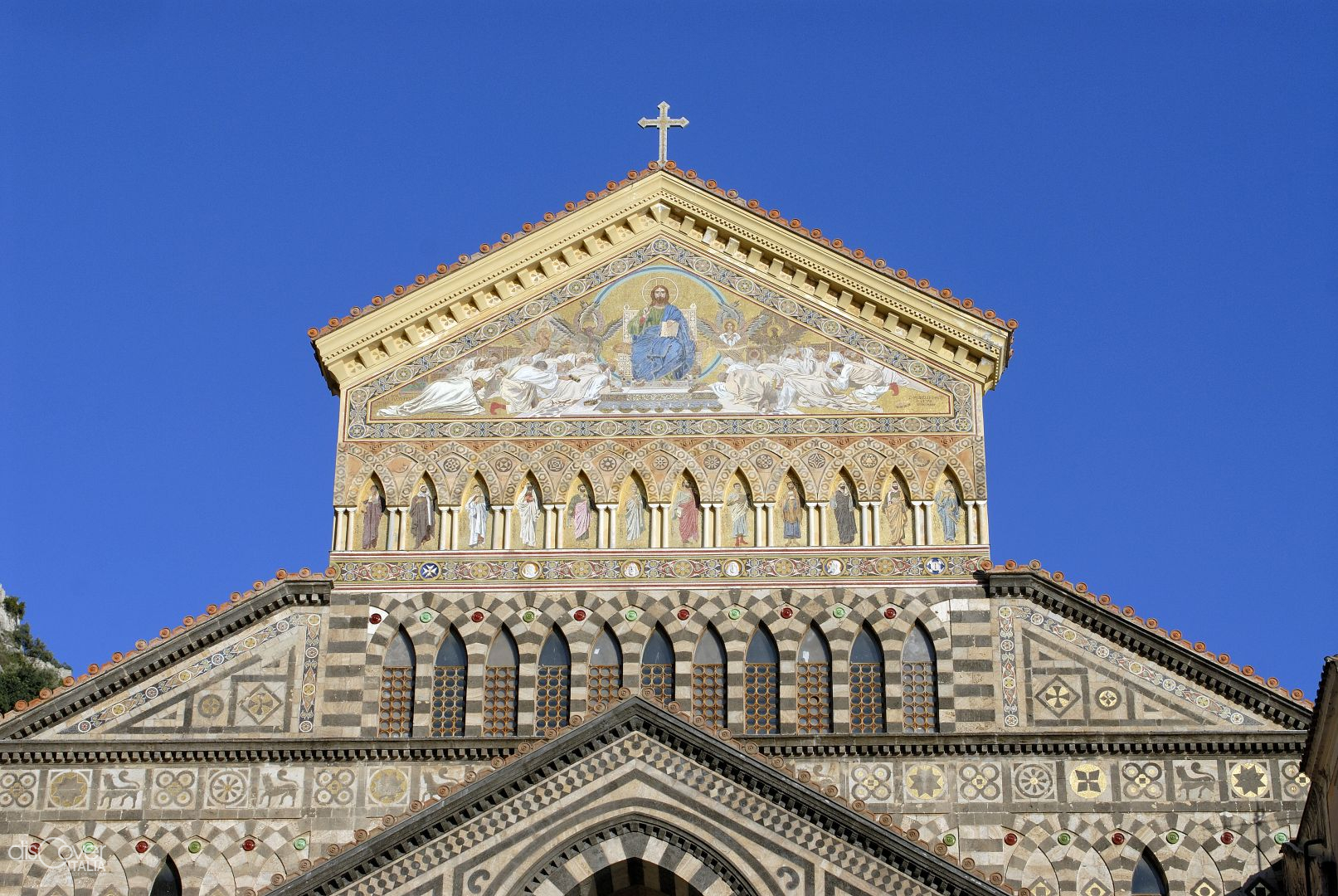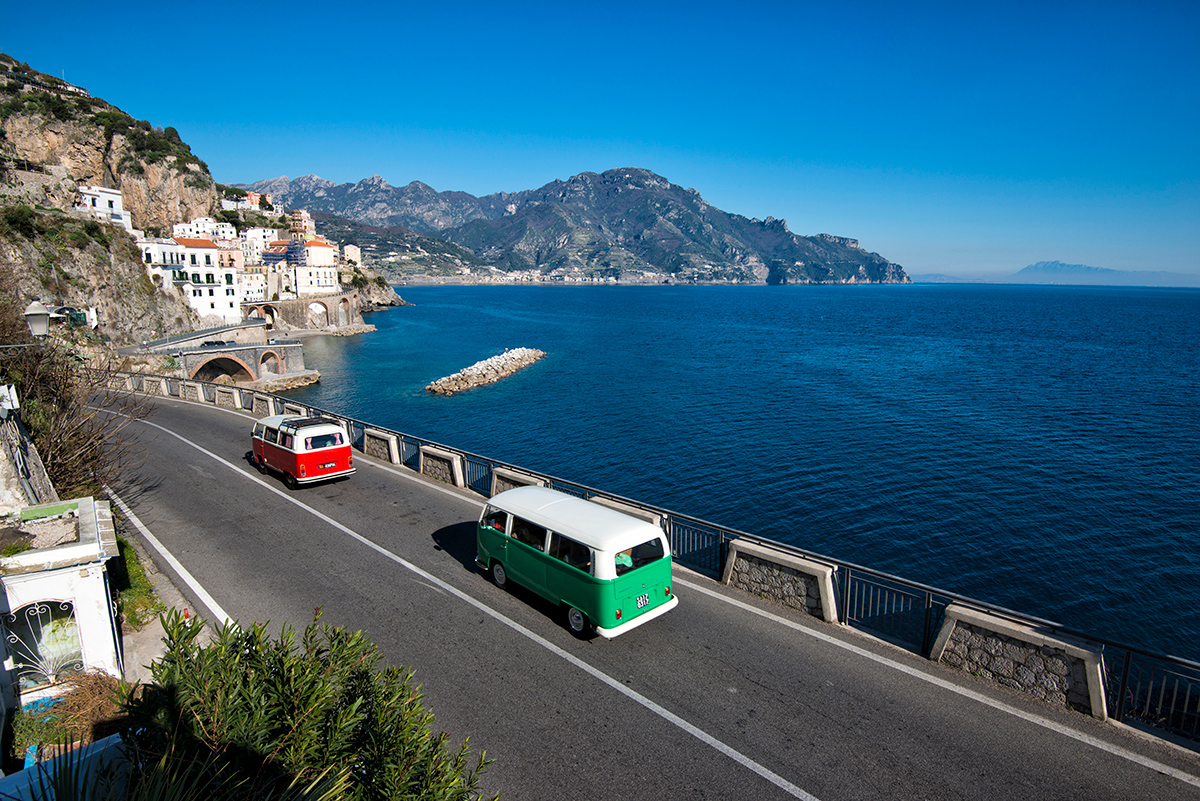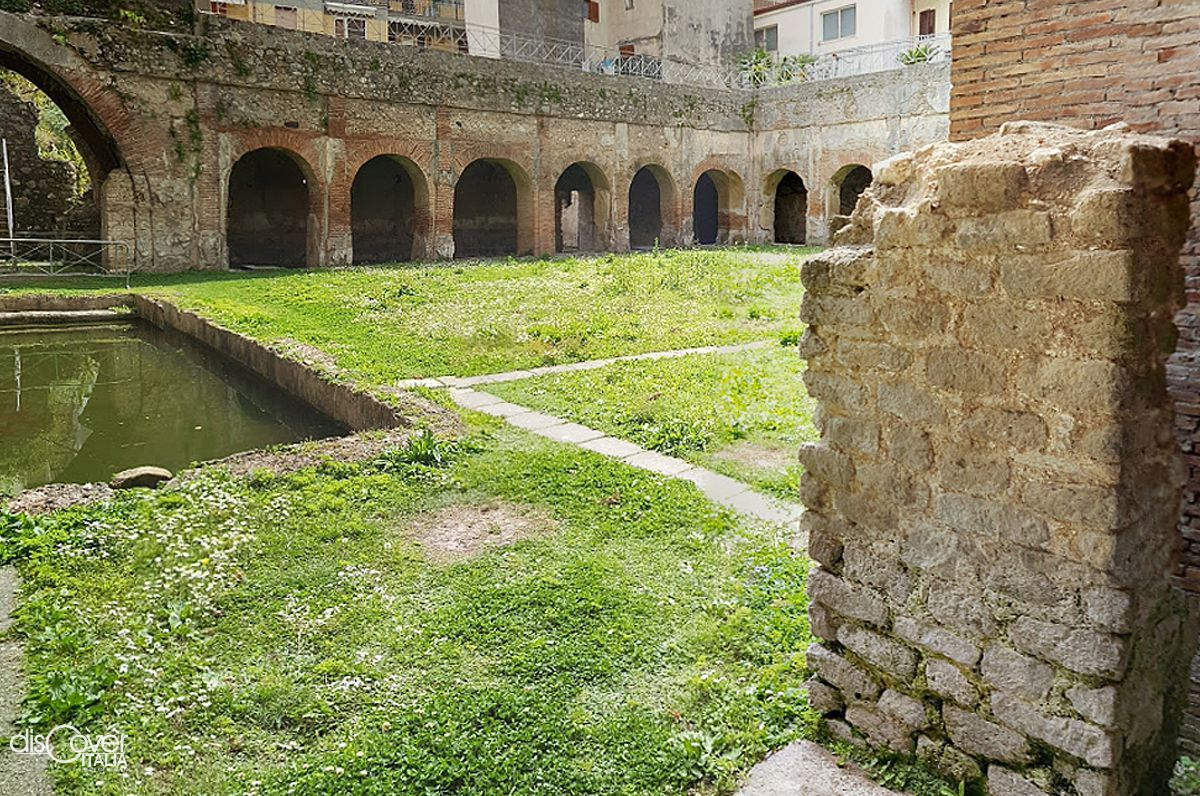It is the smallest village of the Amalfi Coast and of Italy, but the only one of the centres in its area of influence to which the Republic of Amalfi allowed itself to boast the title of civitas (city).
 Separata dalla potente vicina da una distanza di poche centinaia di metri , Atrani era legata ad Amalfi da un gemellaggio che consentiva ai suoi abitanti di potersi definire atranesi ovunque andassero, mentre tutti gli altri cittadini della Repubblica erano identificati da una sponda all’altra del Mediterraneo genericamente come amalfitani. E solo atranesi e amalfitani avevano il diritto di eleggere i governanti della Repubblica, che celebrava la cerimonia d’investitura dei dogi proprio nella chiesa di San Salvatore ad Atrani. Dove risiedevano le famiglie più in vista di Amalfi, godendo delle bellezze offerte da quel morso di terra incastonato tra il monte Aureo, già monte Maggiore, a ovest e il monte Civita a est, allo sbocco della valle del Dragone, formata dall’omonimo torrente. Del resto, quella piccola baia utilizzata come scalo costiero da Etruschi e Greci, era stata popolata per la prima volta stabilmente in epoca romana, come Amalfi, da gruppi provenienti da Scala e da Ravello, che lì avevano trovato un approdo protetto e una valle ospitale, sebbene la leggenda vi collocasse un dragone che sputava fuoco.
Separata dalla potente vicina da una distanza di poche centinaia di metri , Atrani era legata ad Amalfi da un gemellaggio che consentiva ai suoi abitanti di potersi definire atranesi ovunque andassero, mentre tutti gli altri cittadini della Repubblica erano identificati da una sponda all’altra del Mediterraneo genericamente come amalfitani. E solo atranesi e amalfitani avevano il diritto di eleggere i governanti della Repubblica, che celebrava la cerimonia d’investitura dei dogi proprio nella chiesa di San Salvatore ad Atrani. Dove risiedevano le famiglie più in vista di Amalfi, godendo delle bellezze offerte da quel morso di terra incastonato tra il monte Aureo, già monte Maggiore, a ovest e il monte Civita a est, allo sbocco della valle del Dragone, formata dall’omonimo torrente. Del resto, quella piccola baia utilizzata come scalo costiero da Etruschi e Greci, era stata popolata per la prima volta stabilmente in epoca romana, come Amalfi, da gruppi provenienti da Scala e da Ravello, che lì avevano trovato un approdo protetto e una valle ospitale, sebbene la leggenda vi collocasse un dragone che sputava fuoco.
“If you turn around, the church verges like God Himself on the sea…” wrote Walter Benjamin after having seen Atrani in 1924. And on the sea, separated only by a series of arches beyond which there is the beach, Piazza Umberto I opens up as an amphitheatre. It is the heart of the old village of fishermen which has preserved its original mark. There, where once the boats were sheltered when there was a storm, now lives the lounge of bars, shops and shops with local products around the characteristic stone fountain. And from there, And from there start the alleys that climb towards the upper part of the town, from where you can enjoy the most suggestive panoramas. The church of San Salvatore de’ birecto is also in the centre, which owes part of its name to the beret, the birecto, a symbol of the power given to the doges or the dukes of Amalfi. In that church, the solemn investiture ceremony took place and their ashes were kept within those walls. Built before the year 1000, the church has a neoclassical facade with an artistic bronze door made in Constantinople, donated in 1807 by the noble Pantaleone, who had reserved the same homage to the cathedral of Amalfi. On the facade there is also a clock surmounted by a bell tower. The interior, preceded by a pronaos, has a square plan with three naves covered by a barrel vault. The twelfth-century marble pluteus is of particular value and is decorated with peacocks in relief next to a central tree. The church of Santa Maria Immacolata is adjacent to San Salvatore, with one nave, dominated by a barrel vault. There is a Roman cinerary urn on it. In the immediate vicinity, there is also the chapel of Santa Gertrude.
The three sacred places concentrated in the small square give a sense of the incredible number of churches and chapels which Atrani once counted: three hundred in less than a square kilometer square of territory. With the addition of six monasteries on the Mount Maggiore. The Collegiate Church of Santa Maria Maddalena Penitente is linked to an important episode of the history of Atrani. Unique, with its dome of polychrome majolica and the square bell tower with several registers decorated with single lancet windows. It was built in 1274 on the ruins of the medieval fortress as a thanksgiving of citizenship to God, for having freed it from the garrison of mercenaries that King Manfredi had installed in the city to take revenge for his alliance with the Pope. The happy position on the promontory overlooking the village allows you to admire the Gulf of Salerno.
Another panoramic position on Mount Aureo, under the Torre della Ziro, is the one of the 12th century church of Santa Maria del Bando, from the 12th century, which is accessed via a steep staircase. Made up of a single hall, it has a maiolica floor from the church of Santa Maria Maddalena. There is a cinerary urn of white marble with an inscription that connects it to a freedman of the emperors Claudius or Nero. The name is apparently originating from the ancient custom of announcing public announcements from the outdoor terrace overlooking the hamlet, but, according to the legend, it is referring to the grace granted by the Virgin to a man banished and unfairly sentenced to hanging. An episode which has been illustrated in the 15th century fresco above the altar. The church of Carmine dates back to 1601, with a campanile of Moorish style, a single nave covered by a barrel vault and a decoration of Baroque style. On the altar there is a fifteenth-century painting of the Madonna del Carmine, maybe coming from a pre existing aedicule. The eighteenth-century crib is of great artistic and historical value, and is set up for Christmas, depicting nobles and inhabitants of Atrani who really lived then.
The external walls always in poor condition, which are said to bear the signs of the plague, remember the use of the church of San Michele fuori le Mura as a cemetery and a mass grave for the victims of the plague of 1656, located in a cavity of mount Civita, near the north port on the border with Ravello. The interior has a trapezoidal shape and the ancient sepulchres are placed on the inclined rock walls.
Masaniello’s mother was from Atrani. In 1647, pursued by the viceroy's soldiers, Masaniello took refuge 500 steps from his mother’s house on the eastern side of Monte Aureo, in what has since been called Grotta di Masaniello. Still on Mount Aureo, under the tower of Ziro, introduced by a magnificent lemon grove, there is Grotta dei Santi, the only surviving part of the ancient Benedictine monastery of Santi Quirico and Giulitta, which bears on the walls frescoes from the 12th century in bizantine style with the figures of the four Evangelists.
© ALL RIGHTS RESERVED











Comments powered by CComment